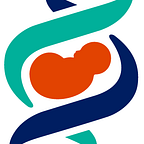FASEB Capitol Hill Day: A scientist’s policy advocacy experience
by Mona Dai
Standing outside the Russell Senate Office Building, I felt small as I took in the giant marble building. The sunshine blinded me as I stared at the intimidating yet beautiful white building that took up an entire square block by itself. It was a windy day on Wednesday, March 15th and I was in Washington D.C. for the Federation of American Societies for Experimental Biology (FASEB) Capitol Hill Day as a recipient of the Society for Birth Defects Research & Prevention (BDRP) funded FASEB Howard Garrison Public Affairs Fellowship. Despite feeling a bit nervous, I was also very excited to be able to participate in the Capitol Hill Day in person, three years after winning the award back in 2020.
After getting temporarily lost, I met up with the other members of my group: Dr. Lee-Ann Allen from the Society for Leukocyte Biology (SLB) and Chair of the Department of Molecular Microbiology & Immunology at University of Missouri (Mizzou) and our guide Meg Thompson from Federal Science Partners (FSP). Together, we would be advocating for advancing science research funding to Senator Josh Hawley and Representative Blaine Luetkemeyer, Congressional representatives from Missouri. We brainstormed a bit in the basement café what we would say in our meetings as Meg gave us advice on how to best construct our pitches.
Since Lee-Ann and I primarily relied on funding from the National Institutes of Health (NIH), we decided to focus on FASEB’s ask for Congress to dedicate at least $51 billion to NIH for the upcoming fiscal year. Lee-Ann first introduced herself and her work on how bacteria can manipulate cells to cause ulcers and cancer in humans. She explained how Missouri’s previous senator, Roy Blunt, had championed biomedical research and how his support at Mizzou had led to the opening of the Roy Blunt NextGen Precision Health building, a facility that focuses on critical health care research. I then explained that I was a PhD student focusing on environmental engineering and public health. Specifically, I research issues related to public drinking water contamination of chemicals such as arsenic and manganese (metals that have been associated with birth defects and other adverse health effects), and mapping areas in the US where their concentrations could be considered unsafe. Closer to home, we also discussed how the current water crisis in St. Charles (a county near where I grew up in St. Louis) has led to the county shutting down 6 of its 7 water wells due to contamination by Ameren Missouri, the main power utility provider in the area.
It was very gratifying to have the opportunity to speak to Senator Hawley’s and Representative Luetkemeyer’s offices. Everyone was friendly, and it felt fantastic to be able to interact with their staff who were extremely engaged in our conversation, took our concerns seriously, and understood the importance of why we flew all the way to Washington D.C. to meet with them. As an unexpected surprise, Representative Luetkemeyer’s office also gave us passes to visit the Capitol Galleries and we were able to end our day soaking in the House and Senate chambers.
Collectively, 45 scientists representing 25 societies visited D.C. on FASEB’s Capitol Hill Day, meeting with 75 House and Senate offices. Through the maze of hallways that we traversed passing well-dressed professionals in suits, huddled lobbyists discussing tactics, and casually dressed families on vacation, I always felt comforted whenever I caught sight of a FASEB badge like mine hanging on someone’s neck and knew that we were on the same team. I am extremely thankful to BDRP and FASEB for providing the opportunity to involve scientists in advocacy & lobbying. It was such a whirlwind day, yet a very meaningful experience. I am so grateful to have participated and would look forward to repeating again!
About the Author
Mona Dai is a PhD candidate in environmental science and engineering at the Harvard John A. Paulson School of Engineering and Applied Sciences. She uses data science to look at spatial patterns of sociodemographic factors and contamination of public drinking water systems in the United States.
About the Society for Birth Defects Research and Prevention
Healthy pregnancies. Healthy babies. Better lives.
The mission of the Society for Birth Defects and Prevention (BDRP) is to understand the cause and pathogenesis of disorders of developmental and reproductive origin to prevent their occurrence and improve outcomes through research, collaboration, communication, and education.
Scientists interested in or already involved in research related to topics mentioned in this blog are encouraged to join BDRP and attend the 63rd Annual Meeting taking place June 24–28, 2023, in Charleston, South Carolina.
BDRP is a multidisciplinary society of scientists from a variety of disciplines including researchers, clinicians, epidemiologists, and public health professionals from academia, government, and industry who study birth defects, reproduction, and disorders of developmental origin. Our members include those specializing in cell and molecular biology, developmental biology and toxicology, reproduction and endocrinology, epidemiology, nutritional biochemistry, and genetics, as well as the clinical disciplines of prenatal medicine, pediatrics, obstetrics, neonatology, medical genetics, and teratogen risk counselling.
BDRP publishes the peer-reviewed scientific journal, Birth Defects Research. Learn more at http://www.birthdefectsresearch.org. Find BDRP on LinkedIn, Facebook, Twitter and YouTube.
